The Innovation Team
Fostering Aligned Teams
Establishing and leading ambidextrous, agile & aligned teams to manage competing innovation challenges consists of the following modules:
1
MANAGING TEAM INNOVATION AND CHANGE
Navigating the Innovation Highway through Dynamic Polar Positioning
2
TEAM INNOVATION AND CHANGE ACTION PLANS
Maximising team innovation capabilities and improving team performance
3
STRATEGIC TEAM SCENARIO PLANNING
Implementation in workplace scenarios

KEY WORDS: Change Management, Paradox Theory, Sense Making, Strategic Alignment
How to embrace innovation and change to lead aligned teams
This session focused on how leaders and teams can identify and understand the paradoxical tensions that arise within teams. The goal is to help teams become more ambidextrous, agile, and aligned, using any tension constructively to propel the team forward rather than causing division. The session outlines a path for leaders to assess both their own and their team’s alignment, ensuring sustainable long-term development.

1: MANAGING TEAM INNOVATION AND CHANGE
Unlocking Ambidextrous Thinking with Dynamic Polar Positioning
Create alignment using the concept of Paradoxical Innovation Orientations (PIOs) and a Dynamic Polar Positioning (DPoP) tool. Participants learn how to identify and navigate innovation tensions within teams, turning potential conflict into constructive momentum.
Key Focus Areas:
- Build a cohesive team without sacrificing diverse perspectives
- Understanding and applying the DPoP framework
- Mapping team innovation dynamics and roles for better alignment
- Facilitating constructive dialogue around team tensions
Key Takeaways:
✔ Apply the DPoP tool to map your team’s innovation dynamics
✔ Navigate the paradox of exploration vs. preservation collaboratively
✔ Use a 360° drawing feedback to surface hidden team tensions and strengths
✔ Foster team alignment while encouraging independent thinking
2: CHANGE READINESS TEAM MAPPING
Aligning Roles and Readiness for Change.
The focus here is on teams assessing their openness to change, respecting individual roles and strengths, and building cohesive, innovation-ready alignment through structured mapping and action planning.
Key Focus Areas:
- Assessing team readiness and openness to innovation
- Clarifying roles and responsibilities in dynamic environments
- Aligning the team around shared goals—without groupthink
- Designing actionable strategies for innovation alignment
Key Takeaways:
✔ Identify team roles and readiness for innovation
✔ Translate competing demands into actionable strategies
✔ Build alignment through structured team mapping and reflection
✔ Promote unity without compromising critical thought

3: STRATEGIC SCENARIO PLANNING FOR INNOVATION
Embedding Alignment and Agility into Team Strategy
Participants apply their insights to real-world scenarios. Through guided planning and project navigation, teams learn how to embed ambidextrous leadership into strategic decision-making and long-term innovation initiatives.
Key Focus Areas:
- Encouraging collaboration that values both alignment and autonomy
- Scenario planning for innovation under uncertainty
- Applying the EXTEND tool to real-world team challenges
- Strengthening team cohesion through strategic foresight
Key Takeaways:
✔ Use scenario planning to anticipate and manage internal tensions
✔ Apply innovation tools to real projects and team challenges
✔ Strengthen team alignment for sustainable innovation outcomes

REC TIME: 2-8 hrs
REC SIZE: 5-20
PLATFORMS: Keynote, Workshop, Coaching, Bus Facilitation
Team Tools & Resources

Innovation Team Coaching Collaborator Canvas and Team Profiling
This Collaborator Canvas and ICLI team profiling will help teams dive deep into managing the tension that change and innovation brings and come up with an action plan. (also available for accredited coaches and licensed partners.) Includes:
- Feedback and Coaching: To assist with understanding how to interpret and apply results for behaviour change.
- Action Planning Sessions: Reveal how teams can utilise the tensions between ‘fixed’ and ‘future’ mindsets deal with the complexities and challenges of constant change



